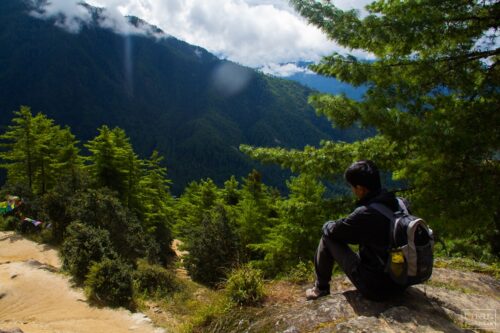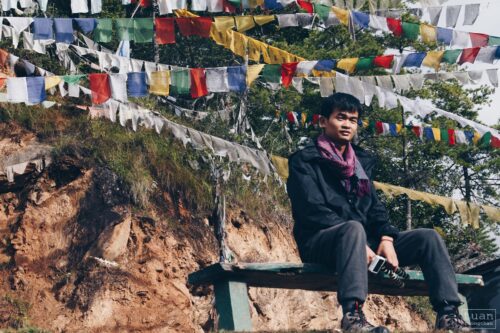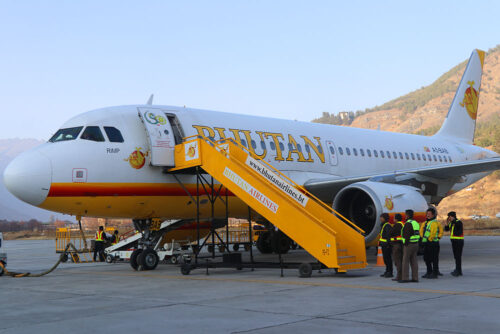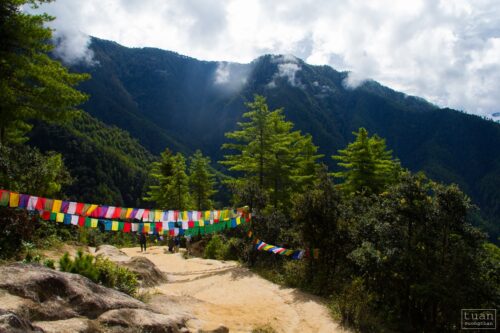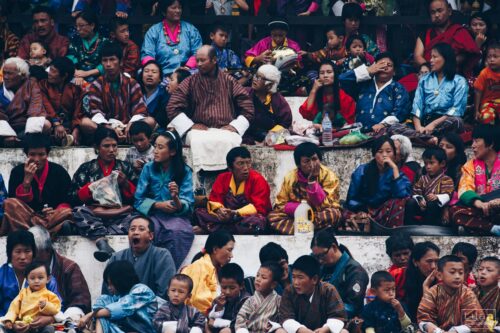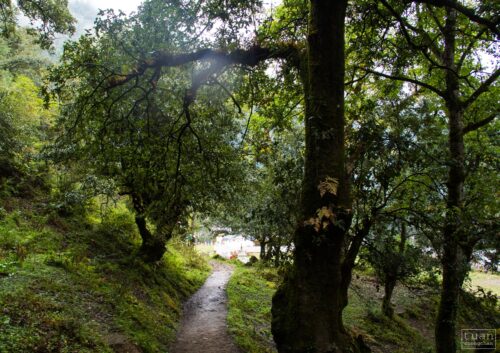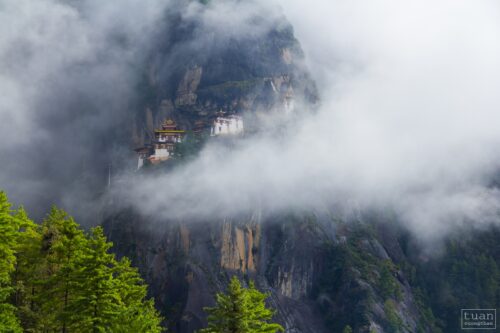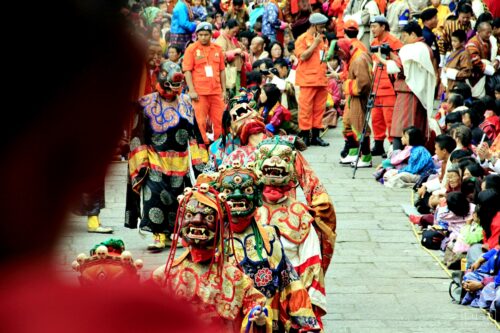The recorded history of Bhutan prior to the 7th Century remains obscure. Only after the visit of Guru Padmasambhava, famous Buddhist saint from India, that the history of Bhutan as a nation came to be known. After the arrival of Buddhism, during the seventh century, the various Buddhist schools began sharing the power in the country with the old aristocratic families. The cleric Shabdrung Ngawang Namgyel united the independent principalities into one state. After his death the theocracy disintegrated and the provincial lords fought to gain control over the central power.
Bhutan’s early history is steeped in mythology and remains obscure. It may have been inhabited as early as 2000 B.C., but not much was known until the introduction of Tibetan Buddhism in the 9th century A.D. when turmoil in Tibet forced many monks to flee to Bhutan. In the 12th century A.D., the Drukpa Kagyupa School was established and remains the dominant form of Buddhism in Bhutan today. The country’s political history is intimately tied to its religious history and the relations among the various monastic schools and monasteries.
The consolidation of Bhutan occurred in 1616 when Ngawana Namgyal, a lama from Tibet, defeated three Tibetan invasions, subjugated rival religious schools, codified an intricate and comprehensive system of law, and established himself as ruler (shabdrung) over a system of ecclesiastical and civil administrators. After his death, infighting and civil war eroded the power of the shabdrung for the next 200 years when in 1885, Ugyen Wangchuck was able to consolidate power and cultivated closer ties with the British in India.
Towards the end of the 19th century, the Tongsa Penlop, Ugyen Wangchuck, who then controlled the central and eastern region, overcame all his rivals and united the nation once again. He was unanimously crowned as the first King of Bhutan in 1907. Traditionally a decentralized theocracy and, since 1907, a monarchy, Bhutan is evolving into a constitutional monarchy with a representative government. The establishment of the monarchy in 1907 brought peace again. His Majesty Jigme Singye Wangchuck, abdicated all of his powers as King to his son, Prince Jigme Khesar Namgyel Wangchuck, with a specific intention to prepare the young King for the country’s transformation to a full-fledged, democratic form of government in 2008.
GEOGRAPHY OF BHUTAN
The northern region of Bhutan consists of an arc of glaciated mountain peaks with an extremely cold climate at the highest elevations. Most peaks in the north are over 7,000 meter above sea level; the highest point is the Kula Kangri, at 7,553 meter, and Gangkhar Puensum, at 7,541 meter.
It has the distinction of being the highest unclimbed mountain in the world. Watered by snow-fed rivers, alpine valleys in this region provide pasture for livestock, tended by a sparse population of migratory shepherds. The Black Mountains in central Bhutan form a watershed between two major river systems: the Puna Tshang Chhu and the Drangme Chhu. Peaks in the Black Mountains range between 1,500 m and 2,700 m above sea level, and fast-flowing rivers have carved out deep gorges in the lower mountain areas. Woodlands of the central region provide most of Bhutan’s forest production. The Kuri Chu, Mangdi Chu, Drangme Chu, Puna Tsang Chu and Amo Chu are the main rivers of Bhutan, flowing through this region. Most of the population lives in the central highlands.
In the south, the Southern foot Hills are covered with dense, deciduous forests, alluvial lowland river valleys, and mountains up to around 1,500 meter above sea level. The foothills descend into the subtropical Duars plain. Most of the Duars is located in India, although a 10 to15 km wide strip extends into Bhutan. The Bhutan Duars is divided into two parts: the northern and the southern Duars. The northern Duars, which abuts the Himalayan foothills, has rugged, sloping terrain and dry, porous soil with dense vegetation and abundant wildlife. The southern Duars has moderately fertile soil, heavy savannah grass, dense, mixed jungle, and freshwater springs. Mountain Rivers, fed by either the melting snow or the monsoon rains, empty into the Brahmaputra River in India. Over 70% of Bhutan is forested.
The climate in Bhutan varies with altitude, from subtropical in the south to temperate in the highlands and polar-type climate, with year-round snow, in the north. Bhutan experiences five distinct seasons: summer, monsoon, autumn, winter and spring. Western Bhutan has the heavier monsoon rains; southern Bhutan has hot humid summers and cool winters; central and eastern Bhutan is temperate and drier than the west with warm summers and cool winters.

